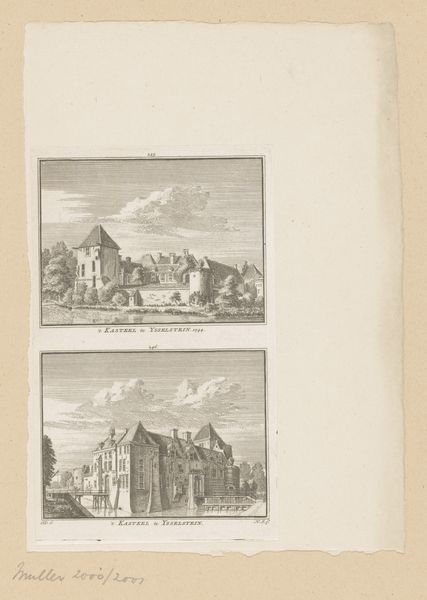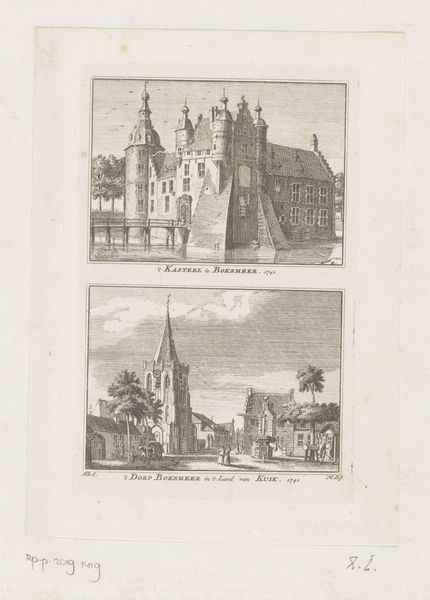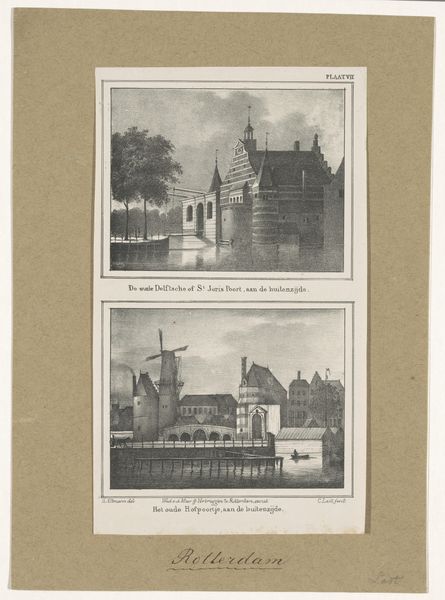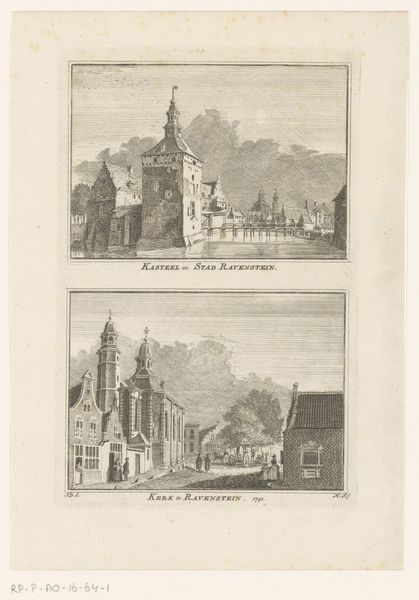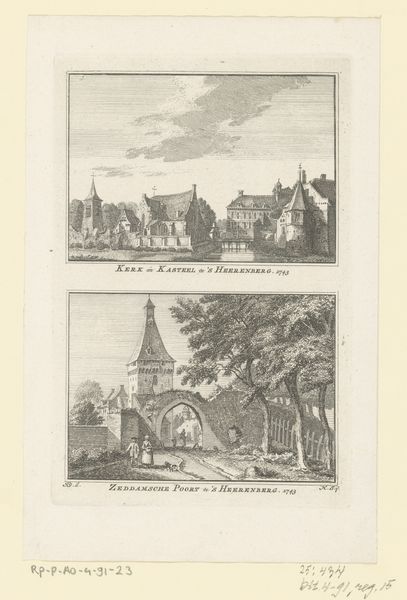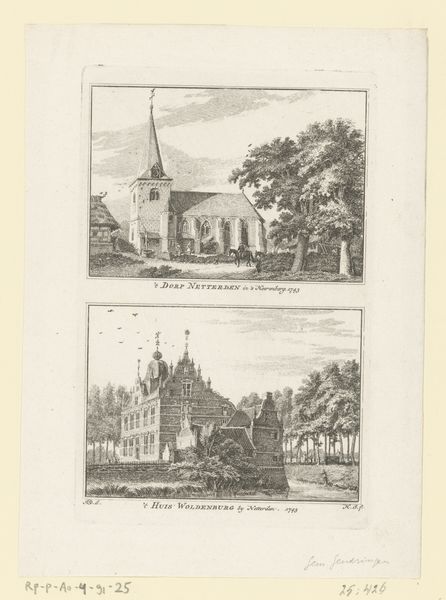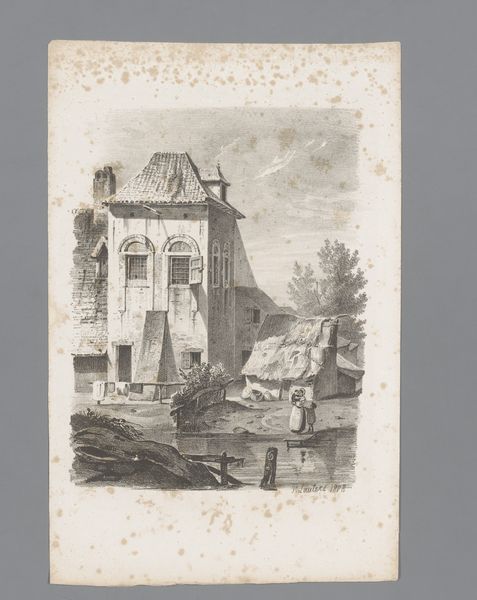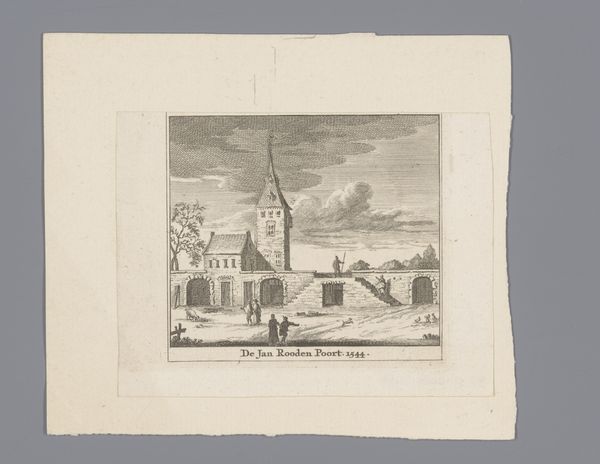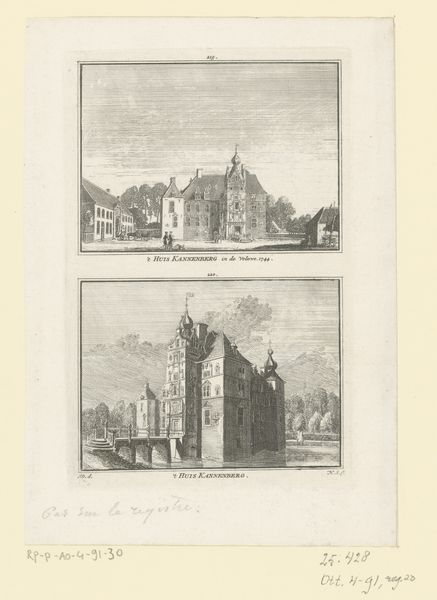
Gezichten op het Kasteel Het Makken bij Vierlingsbeek en de 's-Hertogentoren in Groeningen 1745
0:00
0:00
print, engraving
#
baroque
# print
#
landscape
#
15_18th-century
#
cityscape
#
engraving
Dimensions: height 106 mm, width 167 mm
Copyright: Rijks Museum: Open Domain
Editor: Here we have Hendrik Spilman’s “Gezichten op het Kasteel Het Makken bij Vierlingsbeek en de 's-Hertogentoren in Groeningen,” created in 1745. It’s an engraving presenting two separate landscape views. There’s almost a detached quality to the scenes depicted. What do you see in this piece? Curator: It's fascinating to consider this print as a document of power and perspective. Note how Spilman meticulously renders these landscapes; these aren't just pretty pictures, they are constructed images serving a particular social function. We're looking at depictions of the estates and symbols of authority, reflecting the landowners' social and economic privilege in the Dutch Republic. Who do you think this print was made for, and what purpose did it serve? Editor: Perhaps it was commissioned by the landowners themselves to showcase their status, maybe for distribution among their peers? Curator: Exactly! And what does it say about the relationship between power and representation? The detached quality you noticed isn't accidental; it reinforces a sense of order, control and visual accessibility to the landowners' domains, which may not align with lived experiences. How might ordinary people in the 18th century have felt viewing such scenes? Editor: They might have felt a sense of disconnect, perhaps even alienation from those spaces, emphasizing their exclusion from that level of wealth and status. It really reframes how I initially perceived these calm landscapes! Curator: Precisely. Spilman's work reveals how art participates in broader power dynamics by visualizing and reinforcing social hierarchies, while seemingly offering an objective representation of the land. Editor: That’s insightful; I’ll definitely approach such landscapes with more awareness of the power dynamics at play now. Curator: Indeed, understanding that these are not just passive landscapes, but active participants in the construction of social narratives, enriches our appreciation of art.
Comments
No comments
Be the first to comment and join the conversation on the ultimate creative platform.
